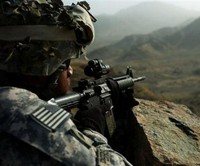Earlier this month, the U.S. Army War College's annual Strategy Conference sought to analyze how the U.S. military needs to adapt to an era of constrained resources and a changing global security environment, which includes the Arab Spring, the U.S. shift toward the Pacific, the effect of cyber warfare and the protracted global economic crisis. Titled the "Future of U.S. Grand Strategy in an Age of Austerity: Challenges and Opportunities," the conference comes at a time when the U.S. is undertaking its fourth post-World War II defense drawdown, along the lines of those that occurred following the Korean War, the Vietnam War and the Reagan buildup. Panelists included experts from major universities and think tanks as well as from the U.S. and foreign military services, while attendees came from the defense industry, academia, the U.S. national security community and foreign governments.
What was perhaps most surprising was the degree of consensus among conference participants regarding the current course for the U.S. military as set out by the Obama administration's new Strategic Guidance (.pdf). According to that document, the U.S. military is to become smaller and leaner, but also more agile in order to manage these new and complex challenges. The desired operational adaptability will require flexible organizations as well as adaptable institutions able to support a wide variety of missions. The conference sought to identify ways the U.S. military might accomplish this.
An important theme at the conference was the need for the Pentagon to invest in developing appropriate methodologies and systems to train leaders to be resilient, critical in their thinking, comfortable with ambiguity, willing to accept prudent risk and able to make rapid adjustments to changing and unpredictable scenarios.

